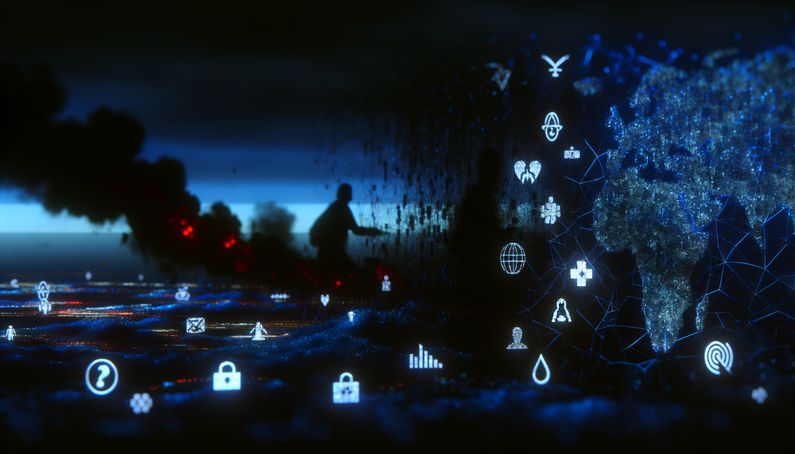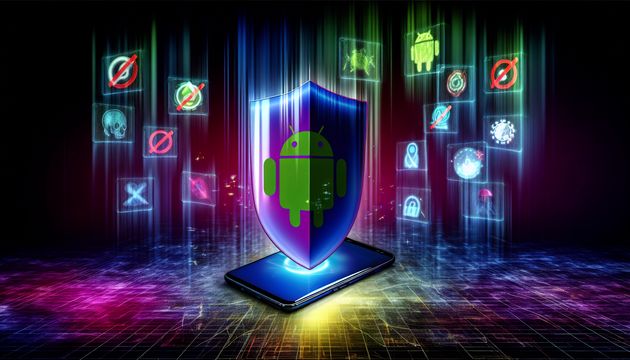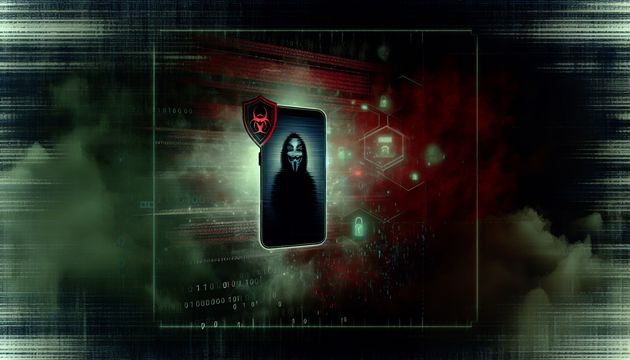
Understanding the Rising Cyber Threats from Iran
The U.S. Department of Homeland Security (DHS) has raised alarms about the increasing cyber threats posed by Iranian actors, particularly the group known as Br0k3r or Pioneer Kitten. This group, believed to be state-sponsored, has been implicated in selling access to compromised networks, a tactic that underscores the sophistication and potential impact of Iranian cyber operations (Bleeping Computer). These threats are not just theoretical; they target critical sectors such as healthcare, government, and energy, which are vital to national security and economic stability. The geopolitical tensions between the U.S. and Iran, exacerbated by recent military actions, further heighten the risk of retaliatory cyberattacks (Hindustan Times).
Current Threat Landscape
Iranian Cyber Threat Actors
The U.S. Department of Homeland Security (DHS) has identified several Iranian cyber threat actors that pose significant risks to U.S. networks. Among these, the group known as Br0k3r, also referred to as Pioneer Kitten, Fox Kitten, UNC757, Parisite, RUBIDIUM, and Lemon Sandstorm, is particularly noteworthy. This group is believed to be state-sponsored and has been involved in selling initial access to breached networks to ransomware affiliates (Bleeping Computer). Their activities highlight the sophisticated nature of Iranian cyber operations and their potential to disrupt critical infrastructure.
Techniques and Tactics
Iranian cyber actors employ a variety of techniques to compromise U.S. networks. These include brute-force attacks, password spraying, and multifactor authentication (MFA) fatigue, also known as push bombing attacks (Bleeping Computer). Imagine a burglar trying every key on a keyring until one fits; that’s similar to how these cyber actors work. These methods are often used to gain unauthorized access to sensitive systems, particularly in sectors such as healthcare, government, information technology, engineering, and energy. The use of these techniques underscores the need for robust cybersecurity measures to protect against such threats.
Potential Targets and Sectors at Risk
The DHS has warned that Iranian cyber actors are likely to target poorly secured U.S. networks and Internet-connected devices. Sectors at high risk include healthcare, government, information technology, engineering, and energy (Bleeping Computer). These sectors are critical to national security and economic stability, making them attractive targets for cyberattacks. The potential impact of such attacks could be significant, leading to disruptions in essential services and economic losses.
Geopolitical Context and Motivations
The escalating tensions between the United States and Iran provide a geopolitical context for the increased cyber threats. Recent U.S. and Israeli military actions against Iranian nuclear facilities have heightened the risk of retaliatory cyberattacks by Iran. Iranian officials have warned of “everlasting consequences” and have expressed a commitment to defend their sovereignty and interests (Bleeping Computer). This geopolitical backdrop underscores the likelihood of cyberattacks as a form of asymmetric warfare.
Recommendations for Mitigation
In response to the heightened threat environment, the Cybersecurity and Infrastructure Security Agency (CISA) has urged organizations to adopt recommended cybersecurity best practices. These include implementing robust access controls, regularly updating software and systems, and monitoring for suspicious activity (Hindustan Times). Think of it as locking your doors and windows and installing a security camera system. Organizations are also encouraged to report any suspicious digital activity immediately to help mitigate potential threats.
Risks of Violence and Domestic Mobilization
Beyond cyber threats, there is also a risk of violence inspired by Iranian rhetoric. U.S. officials have warned that violent extremists or individuals could independently mobilize to launch attacks domestically. This risk would increase significantly if Iran’s Supreme Leader were to issue a fatwa calling for retaliatory action against U.S. targets (Hindustan Times). The potential for such violence highlights the broader security implications of the current geopolitical tensions.
Historical Context of Iranian Cyber Operations
Iran has a history of conducting cyber operations against the United States. Notably, Iranian hackers were involved in the theft of sensitive documents from the Trump campaign last year (Defense One). This historical context underscores the persistent nature of the Iranian cyber threat and the need for ongoing vigilance.
Potential Impact on U.S. Infrastructure
Experts have warned that if tensions between the U.S. and Iran continue to rise, Iran could launch digital attacks on U.S. infrastructure. Potential impacts include disruptions to banking systems and possible blackouts (Economic Times). While a long-term collapse is unlikely, such attacks could cause significant short-term issues, highlighting the importance of preparedness and resilience.
Future Outlook and Strategic Considerations
Looking ahead, the threat landscape is likely to remain complex and dynamic. The ongoing geopolitical tensions and the evolving capabilities of Iranian cyber actors present significant challenges for U.S. cybersecurity efforts. Strategic considerations include enhancing international cooperation, investing in cybersecurity research and development, and strengthening public-private partnerships to improve resilience against cyber threats.
Final Thoughts
The persistent threat of Iranian cyberattacks highlights the need for robust cybersecurity measures and international cooperation. As tensions between the U.S. and Iran continue, the potential for digital disruptions remains significant. Organizations must adopt best practices, such as implementing strong access controls and monitoring for suspicious activities, to mitigate these risks (Hindustan Times). The evolving capabilities of Iranian cyber actors, coupled with geopolitical motivations, suggest that the threat landscape will remain complex and dynamic. Strategic investments in cybersecurity and public-private partnerships are essential to enhance resilience against these threats (Economic Times).
References
- Bleeping Computer. (2025). U.S. Homeland Security warns of escalating Iranian cyberattack risks. https://www.bleepingcomputer.com/news/security/us-homeland-security-warns-of-escalating-iranian-cyberattack-risks/
- Hindustan Times. (2025). U.S. officials sound alert amid Iran conflict, warns citizens of possible terrorist attacks. https://www.hindustantimes.com/world-news/us-news/us-officials-sound-alert-amid-iran-conflict-warns-citizens-of-possible-terrorist-attacks-101750660298844.html
- Economic Times. (2025). Iran threatens U.S.; analysts warn of potential sneak attack by Tehran on America as tensions soar. https://www.economictimes.indiatimes.com/news/international/us/iran-threatens-u-s-analysts-warn-of-potential-sneak-attack-by-tehran-on-america-as-tensions-soar/articleshow/121954188.cms
- Defense One. (2025). DHS expects Iran’s cyber forces will target U.S. networks after strikes on nuclear sites. https://www.defenseone.com/threats/2025/06/dhs-expects-irans-cyber-forces-will-target-us-networks-after-strikes-nuclear-sites/406215/



